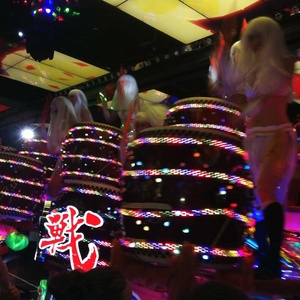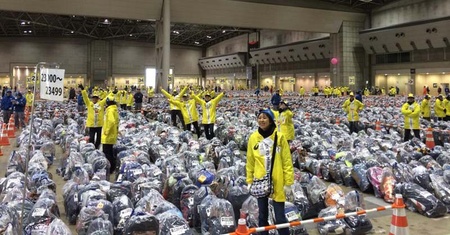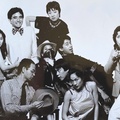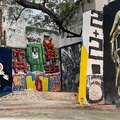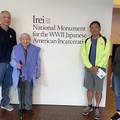I’d never felt a passionate connection to the country of my ancestors. I blamed it on the war: postwar America saw Issei and Nisei trying to get over being labeled the “enemy,” and we Sansei children were faced with a curious dilemma in many ways initiated by our parents—how much did we identify with our grandparents’ Japanese culture and how much did we mold ourselves into assimilated Americans?
With Japan still reeling from its stereotypical image as an “inscrutable” and alien country, those of us trying to resettle and adapt to post-camp life in America were anxious to forsake—whether consciously or not—any connection to our forefathers. In fact, I was so identified with white America as a child growing up in Pasadena, California, in the ’50s, I never thought of myself as ethnically different until kids in school started calling me names like Hilo Hattie and geisha girl. Embarrassed and self-conscious, I’d do anything not to be singled out as different, whether it be as fundamental as refusing to go to Japanese language school or as cosmetic as peroxiding my hair.
It wasn’t until decades later as I turned 40 that I underwent a kind of spiritual transformation from immaculately conceived American to ethnically rooted Japanese American. My own Asian Pride Movement was limited to exploring those Japanese roots that were planted and cultivated right here on American soil, with a huge part of that story coming from what was buried in the dusty and desolate camps that housed our families during WWII.
I still distanced myself from that faraway land several continents away that was only known to me as described by my Buddhist obachan. Curling up on her bed as a child, I remember her yearning for the homeland she remembered as enshrined by the snowcapped majesty of Mt. Fuji. Because she never learned English and I no Japanese, we somehow communicated through our senses, and I felt her longing.
As I went from childhood to adulthood, Japan remained a romanticized travel poster—beautiful on the surface but incomprehensible beneath. Deep inside me were those lingering white-faced demons screaming that Japan was a country where I didn’t belong, a place I didn’t even come from. Educated in Western Civilization, I studied Michelangelo over Unkei, Renoir over Hiroshige, and The Great Gatsby over The Tale of Genji. I didn’t even know when the Meiji Period was.
At some point I read Turning Japanese, memoirist David Mura’s paean to the country of his heritage, and heard others write and speak of the radical transformation that seemed to overtake Sansei when they journeyed “home” to Japan. Like Mura, I became eager to become enlighteningly connected to the Japan of my heritage—even though I was saddled with the emotional baggage that an aging Sansei inescapably carried.
In the end, it took a lottery pick into the Tokyo Marathon to finally compel me to visit the real Mt. Fuji. With running shoes, tourist maps, and Japanese-English dictionary in hand, I embarked on my very first trip to the place whose ancient name—Yamato—I shared.
After I arrived at Haneda Airport, I understood what a Japan-born friend later told me that she gained twenty pounds the minute she stepped off the plane, and felt big and awkward until she left—as any female over 5'2" would in what seemed like an entire country of Lilliputians with tiny footsteps. At 5'5", I was an Amazon woman.
I spent my first three days in Tokyo in constant distress as I attempted to navigate what seemed to be the most enormous train station in the world. Entering Shinjuku Station was like stepping into an endless maze, with an entrance on one side of the station no guarantee of catching a train leaving from the opposite end. The subway map was a mishmash of red, green, purple, gold, pink, orange, and blue lines that blurred into one. Indistinguishable names like Akasaka and Asakusa were scrambled together like on a folded scrabble board. I was a lost and forlorn gaijin who suddenly understood how the word “disoriented” came to be.
[On the other hand, Tokyo’s mass transit system is known as among the best in the world. Once familiar with its interweaving subways and trains, you can get anywhere in the country within minutes, if not hours, provided one has some understanding of the various lines and stations. I’m told that mastering it takes only a few days, which was unfortunately all the time I had before departing for another city.]
It was not just the state of physical confusion that was bewildering. Inside me was a relentless emotional battle as I sought to identify and understand the ways in which I fit in with a country with unexpressed but vaguely familiar ways. For example, smiling faces and uber-politeness greeted us wherever we went. Distressing, however, was the feeling these smiles were indicative of a deeper truth that was not expressed, and which could in fact be the very opposite of what Japanese faces revealed. For example, a professional tour guide, my sister’s business associate, offered at the last minute to lead us through Kyoto for two days. When we went to pay him, he smiled and refused to take any money for what would normally be a $300-per-day tour that he squeezed into his very busy schedule. Among my Asian American friends, we had a rule about refusing money three times before finally accepting, and all of a sudden I was reminded where that rule originated. Here in Japan, nothing could be taken at face value, and I grappled to figure out how to handle situations like these with the proper amount of Japanese politeness and sense of obligation both familiar and foreign to me.
It became easy to see how the Japanese became such a highly orderly people. It started with rules from which there was absolutely no deviation. People stood in straight lines to get on a train; trash was kept hidden and never seen; and shoes were to be immediately removed before touching spotless wood floors. As polite as Japanese could be, a prompt scolding would ensue if any rules were broken—like when I clumsily put my shoes back on before stepping completely off a wooden floor. I desperately tried to be on my best behavior, but often felt on the precipice of doing something very bad. It harked back to the mortal fear I felt around my disciplinarian Japan-bred Nisei father.
In such a rigid society, it was easy to see how a sense of rebellion brewed just beneath the surface, and unconventional behavior loomed large. As anthropologist Ruth Benedict described in her book, The Chrysanthemum and the Sword, these were contradictions Westerners had difficulty understanding. It could be detected in a society where people concealed their emotions and followed strict rules while young people sported wildly colored hair and wore bizarre outfits. I’d never seen white-wigged, bikini-clad Japanese women playing taiko in fluorescent lights until we went to a popular Tokyo nightspot called the Robot Restaurant. Here was Japanese unconventional flamboyance at its height.
In spite of the confusion inherent in any cultural clash, Sansei or not, there was no denying the virtues of this simply amazing country. Nowhere else could any traveler find such sparkling and efficient mass transit; meticulous organization (e.g., the efficient way 39,000 drop bags were arranged to greet marathoners at the finish line); overly eager translators and direction givers; solicitous hotel staff; delectable food too beautiful to eat; consumer goods to fit every need, especially when it came to bathroom toilets; and enough technologically advanced equipment to fill whole city blocks.
True to my obachan’s memory, Japan also satiated my need to experience the things that I couldn’t help but love as she did: ancient temples brimming with material and spiritual Buddhas just steps away from bustling thoroughfares, and always in the distance snow-peaked Mt. Fuji covered in mist. Enjoying all the best Japan had to offer, cultural differences melded into one, and nothing and no one was strange anymore.
© 2014 Sharon Yamato



